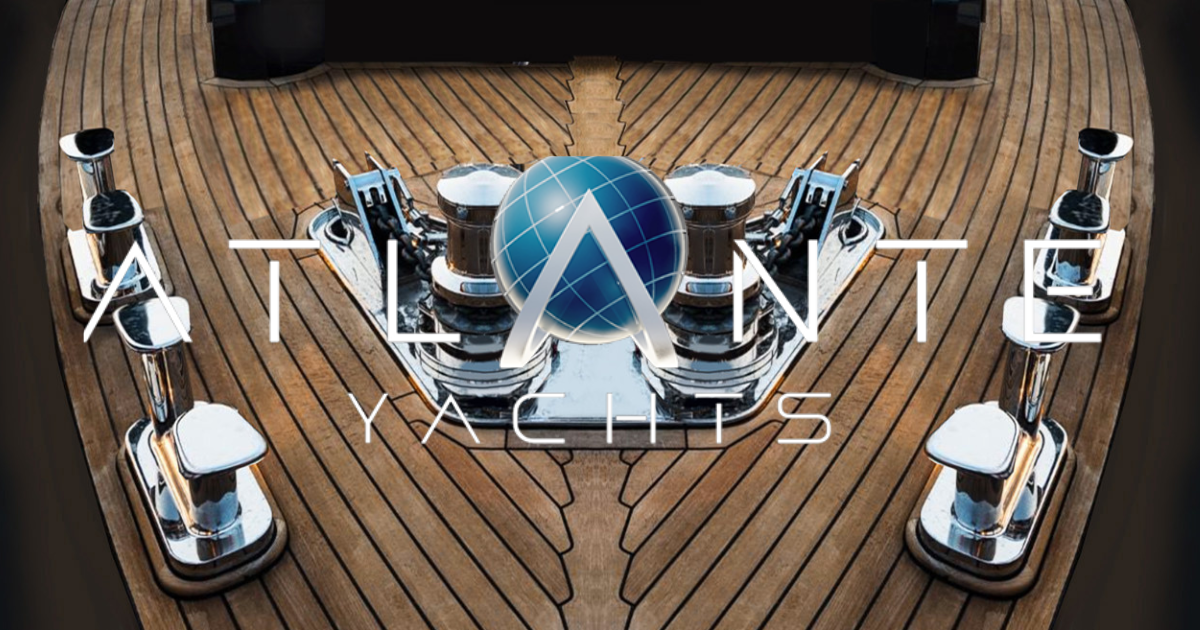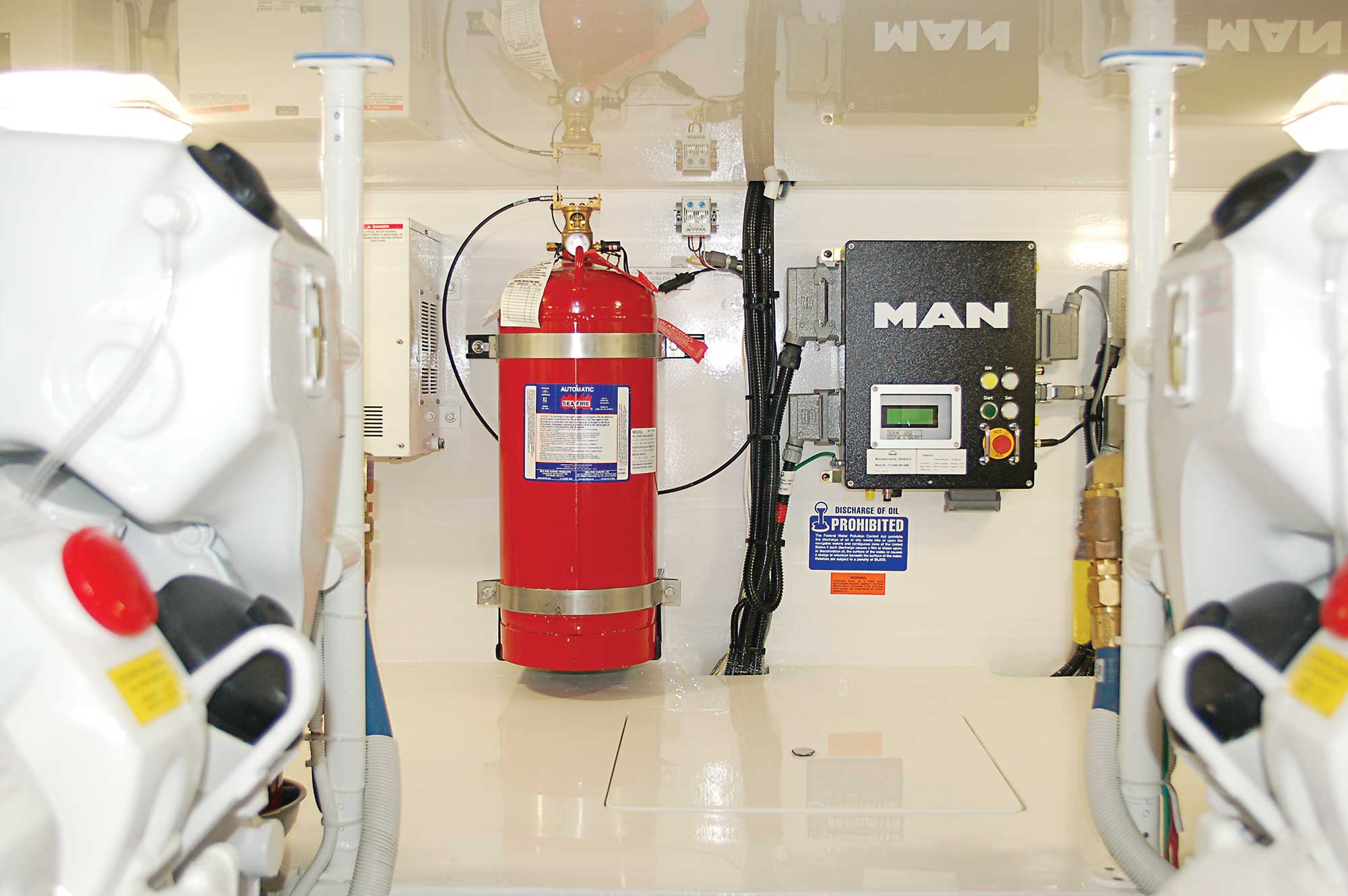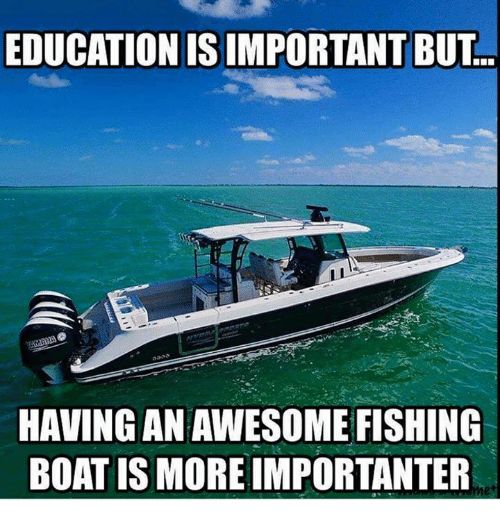What Piece of Equipment on a Boat Is Most Important in Preventing Propeller Strike Injuries?
Boating is a beloved activity for many, but it comes with its risks. One of the gravest dangers is propeller strike injuries. These injuries can be severe and even fatal.

The engine cut-off switch lanyard is the most important piece of equipment on a boat to prevent propeller strike injuries. This device ensures that if the operator falls overboard, the engine stops immediately, reducing the risk of anyone coming into contact with the spinning propeller.
In addition to using an engine cut-off switch lanyard, it is essential to turn off the engine when passengers are boarding or disembarking.
Propeller accidents often occur when the engine is running while people are still moving about the boat. Having everyone wear life jackets and educating passengers on boat safety can further minimize risks.
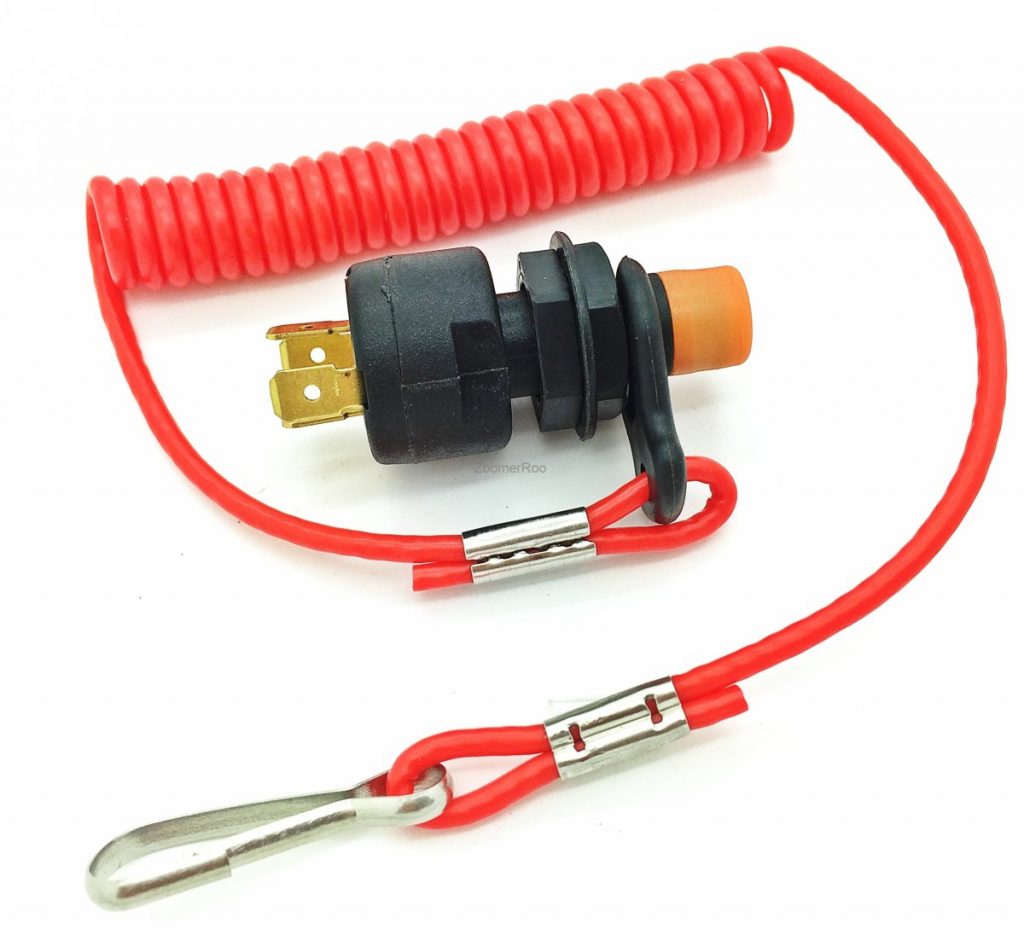
Boaters should also consider installing advanced safety devices and following best practices to create a safer boating environment.
By being vigilant and taking the necessary precautions, tragic accidents can be significantly reduced, ensuring that everyone enjoys their time on the water safely.
Key Takeaways
- Engine cut-off switch lanyard is crucial for preventing propeller strike injuries.
- Always turn off the engine when passengers board or leave the boat.
- Wear life jackets and educate passengers on safety practices.
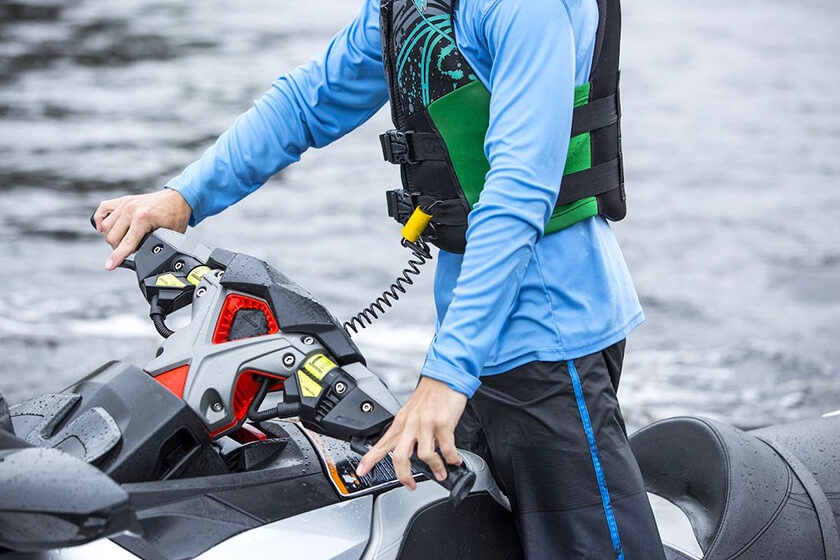
Understanding Propeller Strike Injuries
Propeller strikes are a serious hazard in boating, often resulting in severe injuries or death. Recognizing risk factors and understanding the impact on safety can help prevent these accidents.
Identifying Risk Factors
Certain behaviors and conditions increase the risk of propeller strike injuries.
Common risk factors include operating the boat at high speeds, especially in congested areas with a lot of swimmers or divers.
Inexperienced boat operators who lack proper training are also more prone to accidents.
Alcohol consumption by both the operator and passengers also heightens the risk.
Poor weather conditions and reduced visibility further contribute to potential accidents.
It is crucial to ensure that all safety equipment, such as life jackets, is readily available and used properly.
Ensuring that passengers follow safety protocols can minimize the chances of such accidents.

Statistics and Impact on Safety
Propeller strikes cause hundreds of injuries each year, many of which are life-threatening. According to the U.S. Coast Guard, there are approximately 150 reported propeller strike accidents annually, resulting in dozens of deaths. These injuries can range from deep lacerations and broken bones to spinal cord damage.
The financial burden of medical treatment for these injuries can also be significant. Moreover, the emotional impact on victims and their families is profound.
Improving boating safety practices can greatly reduce the occurrence of these tragic incidents.
A comprehensive approach to boating safety includes training, proper use of equipment, and adherence to safety guidelines.
Using tools such as an ignition safety switch or kill switch can also be effective in preventing these hazardous situations, ensuring the engine is automatically turned off if the operator is thrown from the helm.
Propeller Safety Legal Framework
The legal framework surrounding propeller safety includes strict laws and regulations aimed at preventing propeller strike injuries. The U.S. Coast Guard plays a crucial role in enforcing these regulations and ensuring boating safety.
Role of the U.S. Coast Guard
The U.S. Coast Guard oversees and enforces boating safety regulations related to propeller strikes.
They require boat operators to use specific safety equipment, such as engine cut-off switches, to reduce the risk of injuries.
These devices automatically stop the engine if the operator is thrown overboard.
The Coast Guard also provides valuable education on boating safety through courses and certifications.

Boaters are taught proper use of safety equipment and the importance of engine shut-off protocols.
Regular inspections by the Coast Guard ensure compliance with safety standards.
They check if boats have the necessary equipment and if operators are following required procedures.
These inspections help maintain a safe boating environment.
Failure to adhere to these regulations can result in fines and penalties. The Coast Guard has the authority to impose these penalties to ensure compliance and prevent accidents.
For more specifics on propeller safety regulations, you can refer to their official brochure.
Preventative Equipment and Techniques
Preventing propeller strike injuries on boats involves a mix of essential safety gear and active devices. These measures ensure both the operator and passengers stay safe while on the water.
Essential Safety Gear
Engine cut-off switches and ignition safety switch lanyards are critical in preventing propeller strikes.
If the captain leaves the helm or is incapacitated, these devices stop the engine to prevent accidents. The lanyard attaches to the operator, ensuring the engine shuts off if they fall overboard.
Life jackets or personal flotation devices (PFDs) are another must-have.
They keep individuals afloat and easier to spot in the water. Consistently wearing a life jacket reduces the chances of severe injury if someone falls overboard.
Boats should also carry a fire extinguisher. While it's not directly related to propeller injury prevention, it's part of overall boat safety.
Having one can prevent other emergency situations that might distract the operator, keeping attention on safe boating practices.
Active Devices and Systems
Propeller guards are physical barriers around the propeller. They can deflect or minimize contact with objects or people, reducing injury risks. These can include deflection devices, full cages, or ring guards.
Anti-feedback steering systems help the operator maintain control, preventing sudden turns that could throw passengers overboard or cause propeller accidents.
Modern boats may have advanced propeller safety devices.
These include systems that prevent the engine from starting if the propeller isn't safely engaged or if passengers are too close.
Engine in gear technology ensures the propeller only spins when necessary, reducing idle-time risks. This practice keeps the propeller still when passengers board or disembark, avoiding potential injuries.
Creating a Safe Boating Environment
Ensuring a safe boating environment involves educating all individuals on board and practicing proper boat operation techniques to avoid accidents, including propeller strike injuries.
Importance of Education and Training
Education and training are key in fostering a secure boating environment. Boat operators and passengers must know basic safety protocols.
Boating safety courses offer essential information on navigating waters safely.
These courses teach operators to understand weather conditions, handle emergencies, and properly use safety equipment like personal flotation devices (PFDs).
Parents and responsible adults should ensure everyone, especially children, understands safety rules before boarding.
Regular safety drills can reinforce the knowledge gained from these courses.
Practicing what to do in man-overboard situations, for instance, helps build automatic responses.
Signage in visible areas, detailing safety instructions, can also aid in raising awareness among passengers.
This education and ongoing reminders help reduce risks significantly.
Boat Operation and Passenger Safety
Proper boat operation is crucial in preventing accidents. The operator must always stay alert and never leave the helm unattended.
Using an ignition safety switch lanyard, or kill switch, can stop the engine if the operator is incapacitated.
Ensuring passengers remain seated while the boat is moving prevents falls and potential propeller injuries.
Operators should turn off the engine when passengers are boarding or disembarking to avoid risks. This measure ensures propellers are not spinning during vulnerable moments.
Implementing a pre-departure checklist can also enhance safety.
This checklist should include ensuring all safety equipment is in place and accessible, confirming everyone knows emergency procedures, and checking the weather forecast.
Participating in responsible boating practices and making safety a priority can vastly improve the boating experience for everyone on board.
Implementing On-Board Safety Measures
Effective on-board safety measures can significantly reduce the risk of propeller strike injuries. This involves assigning specific safety roles and clear communication strategies.
The Role of a Spotter
A spotter is crucial for maintaining safety on board. The spotter keeps an eye on swimmers, divers, and any obstacles in the water, alerting the captain to any immediate dangers.
This role requires constant vigilance and effective communication with the crew.
Having a spotter helps the captain focus on steering control without worries about missing hazards.
Spotters should be familiar with the use of alarms and signals to ensure immediate action can be taken if a swimmer or diver is in danger.
They should also monitor any people on floats or near the boat to prevent accidents.
Effective spotters can prevent many accidents, making them an indispensable part of on-board safety measures, especially in crowded waters or areas with many recreational activities.
Communicating Hazards and Uses of Buoys
Clear communication about hazards and the use of buoys plays a big role in preventing accidents.
Captains should ensure that everyone on board understands the meaning of different buoys and markers in the water.
Buoys can indicate areas to avoid, such as swimming zones and shallow waters.
Warning buoys are also used to mark hidden dangers beneath the water surface. Proper buoy placement and understanding can prevent propeller strike incidents.
Captains must ensure they communicate any observed hazards, making use of visual and auditory alarms to alert the crew and passengers promptly.
Correct and timely communication ensures everyone remains aware of potential dangers, promoting a safer boating experience for all.
Strategies for Injury Prevention
Preventing propeller strike injuries involves several strategies.
These include creating designated swimming areas and implementing safety equipment like propeller guards and interlocks.
These actions help keep people safe near boats.
Designated Swimming and Diving Areas
One of the key strategies to prevent propeller injuries is establishing clear swimming and diving zones.
Marked areas keep swimmers and divers away from the boat's propellers.
It is crucial that these zones are well-marked with buoys or signs to ensure visibility.
In congested boating areas, it's essential to keep these zones separated from boat traffic.
Clear marking helps boat operators know where they should avoid driving. This reduces the risk of accidents significantly.
Using an anchor to keep the boat in place can further ensure safety.
When a boat is anchored, it's less likely to drift into swimming areas.
Always use a ladder for boarding and disembarking when the engine is off to prevent propeller strikes.
Propeller Guard Implementation
Implementing propeller guards is another effective strategy for injury prevention.
Propeller guards act as a shield around the propeller.
They prevent direct contact with it, reducing the chance of injury if someone comes close to the back of the boat.
Additionally, modern technology like interlocks and sensors can provide extra protection.
Ladder interlocks prevent the engine from starting if the ladder is down.
Engine cut-off switches (kill switches) ensure the engine stops if the driver leaves the helm unexpectedly.
Using propeller guards and other safety measures helps create a safer environment for swimming and diving near boats.
These measures are particularly important in areas where people enjoy water activities.
Boater Conduct and Best Practices
Ensuring safety on the water involves understanding key aspects of proper conduct and preparedness.
This includes following operational standards, practicing proper etiquette, and having a solid emergency response plan.
Operational Standards and Etiquette
Operational standards and etiquette are essential to maintaining safety and preventing accidents on a boat.
Boaters should always use a nautical chart to navigate and avoid shallow areas where propellers might strike the bottom or hidden objects.
Carelessness often leads to dangerous situations.
Always turn off the engine when passengers are boarding or disembarking to prevent accidents. This reduces risk and ensures everyone's safety.
Respect boating rules and regulations. This includes adhering to speed limits and maintaining a safe distance from other boats and swimmers.
These practices ensure that the boating environment is safe for everyone involved.
Emergency Response Planning
Emergency response planning is crucial for dealing with unexpected situations.
Boaters should regularly check that their ignition safety switch lanyard is functioning properly, as this device can shut off the engine if the operator falls overboard.
Make sure to have a clear plan in place for different emergency scenarios.
This includes having life jackets readily available and knowing how to use distress signals if help is needed.
Training all passengers on emergency procedures can make a critical difference.
They should know how to stop the engine and perform basic first aid in case of propeller strikes or other injuries.
Technological Advances in Propeller Safety
Recent developments in boating technology have led to innovative solutions that enhance safety and prevent propeller strike injuries.
These advances include the use of automatic shut-off systems and alternatives to traditional propellers.
Sensors and Automatic Shut-Off Systems
One important advance in propeller safety is the use of electronic sensors.
These sensors detect when someone falls overboard and can trigger an automatic shut-off of the boat's engine.
This immediate response helps to prevent injuries by stopping the spinning propeller as quickly as possible.
In addition, the ignition safety switch lanyard, or kill switch, is crucial.
This device is attached to the boat operator.
If the operator is thrown from the helm or leaves the control area, the engine shuts off automatically.
This feature significantly reduces the risk of propeller strikes when accidents happen.
Certain boats also feature automatic shut-off systems.
These systems use sensors that constantly monitor the boat's surroundings.
If the sensors detect anything unusual, like a person falling overboard, the system can immediately cut the engine power.
These technologies work together to ensure faster and more effective prevention of propeller-related injuries.
Innovations in Non-Propeller Propulsion
New types of propulsion systems are also playing a role in propeller safety.
One such innovation is the use of jet drives.
Jet drives use water jets to propel the boat instead of a traditional propeller. This eliminates the risk of propeller strikes entirely since there are no exposed blades.
Another innovation includes ringed propellers.
These propellers are enclosed in a protective ring, which helps prevent direct contact with the blades. The ring acts as a barrier, reducing the chance of injuries.
Guarding devices like deflection devices or full cages provide physical barriers around the propeller.
These improvements protect passengers and swimmers from accidental contact.
By incorporating such safety measures, boating becomes safer and the likelihood of severe injuries is greatly reduced.
Frequently Asked Questions
Preventing propeller strike injuries involves using the right safety equipment and following specific operational practices.
These measures help protect both passengers and swimmers around boats.
How can boaters minimize the risk of propeller strike injuries?
Boaters should always turn off the engine when passengers are boarding or disembarking. Ensuring the propeller is not spinning during these times is vital in reducing the risk of injury.
What safety equipment is essential to prevent injuries caused by boat propellers?
The engine cut-off switch lanyard, or kill switch, is crucial. If the captain leaves the helm or has a medical emergency, the kill switch will automatically stop the engine.
What are common safety measures for avoiding propeller strikes to swimmers or skiers?
Swimmers and skiers should stay clear of the stern where the propeller is located. Boaters should always make sure everyone is on board before starting the engine.
How does an engine cut-off switch contribute to propeller safety?
An engine cut-off switch immediately stops the engine if the operator is thrown overboard or leaves the helm unexpectedly. This quick action prevents the propeller from continuing to spin and causing injuries.
What operational practices are recommended to prevent propeller injuries?
Boaters should avoid starting the boat with the engine in gear. It's important to reduce speed and be cautious when near swimmers or in congested areas.
What role does a spotter play in reducing the incidences of propeller strike injuries?
A spotter can help keep an eye on swimmers, skiers, or anyone in the water. They can alert the operator to potential dangers. This makes boating safer for everyone involved.
Charlie is Editor-in-Chief of Sea Magazine

